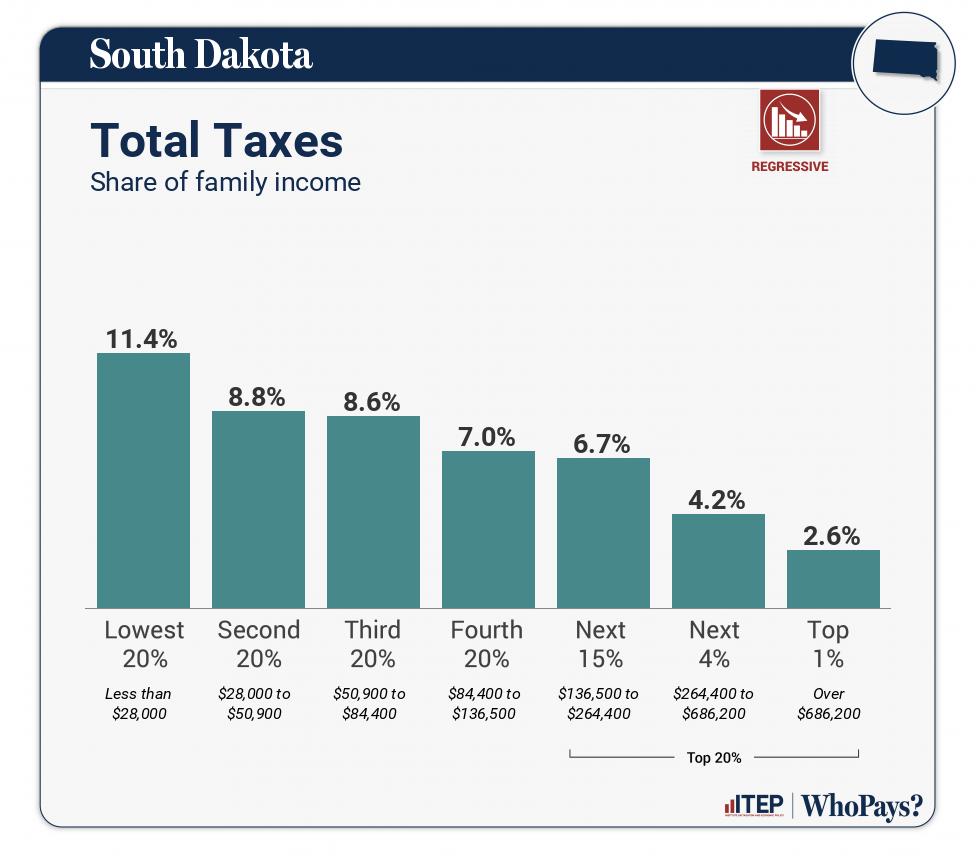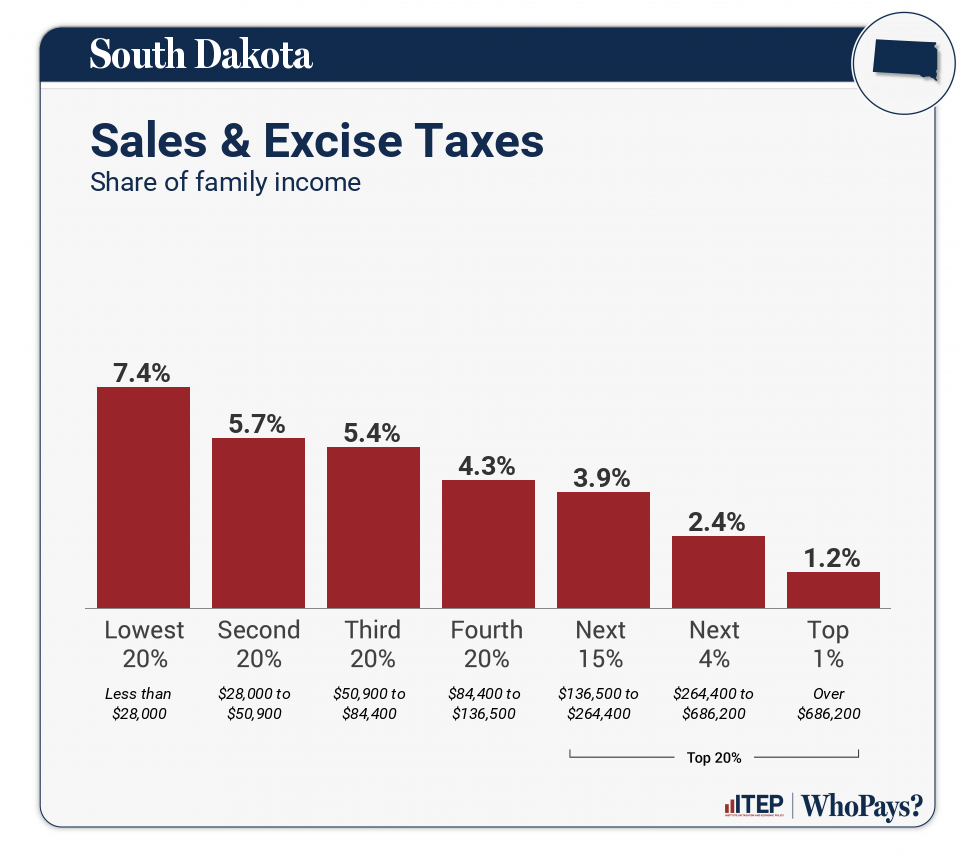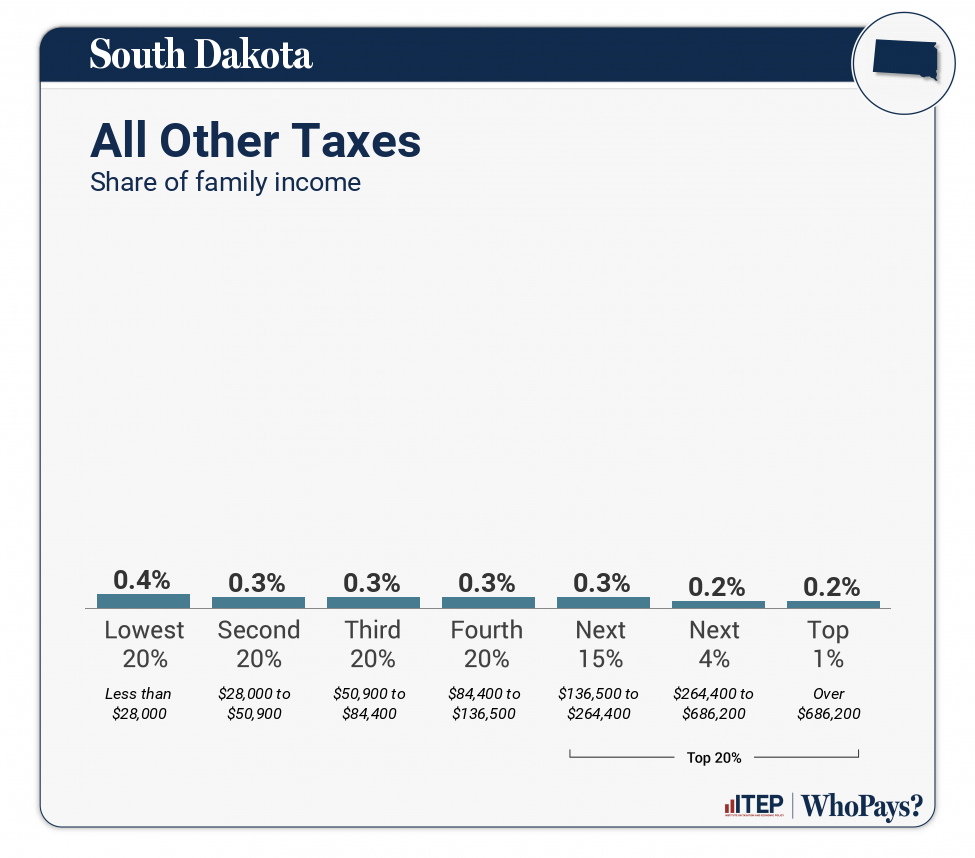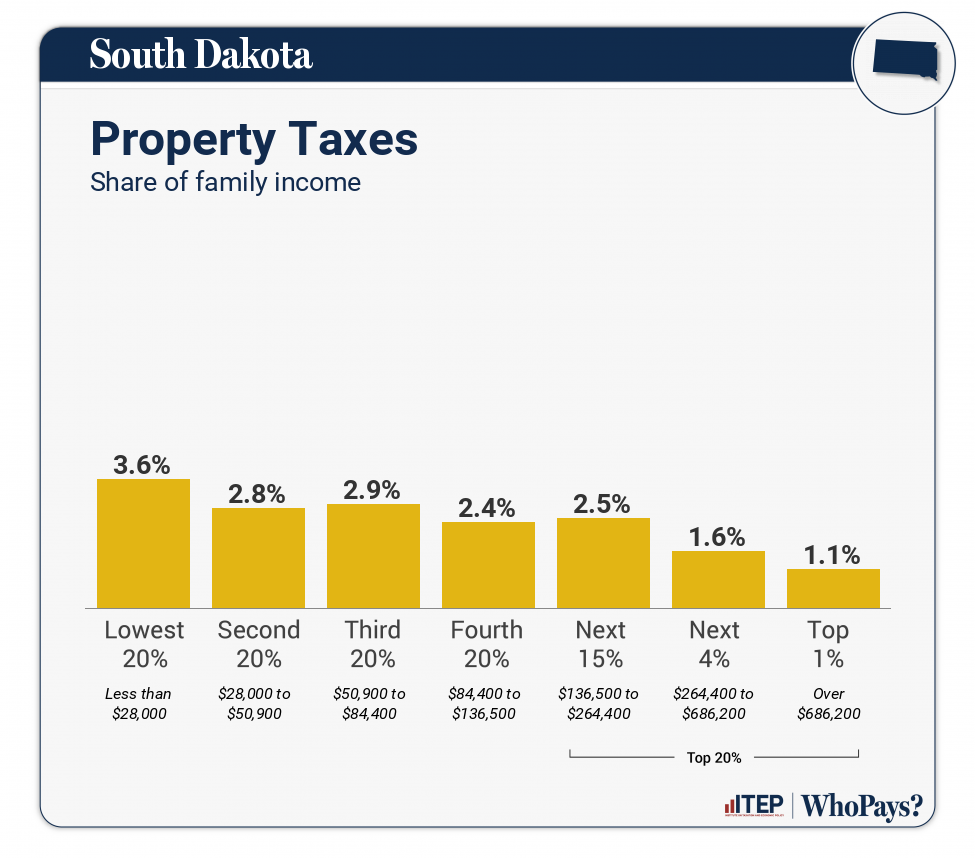South Dakota: Who Pays? 7th Edition

South Dakota
Download PDF
State and local tax shares of family income
| Top 20% | |||||||
| Income Group | Lowest 20% | Second 20% | Middle 20% | Fourth 20% | Next 15% | Next 4% | Top 1% |
| Income Range | Less than $28,000 | $28,000 to $50,900 | $50,900 to $84,400 | $84,400 to $136,500 | $136,500 to $264,400 | $264,400 to $686,200 | Over $686,200 |
| Average Income in Group | $14,600 | $40,400 | $65,400 | $112,700 | $175,900 | $385,800 | $1,860,100 |
| Sales & Excise Taxes | 7.4% | 5.7% | 5.4% | 4.3% | 3.9% | 2.4% | 1.2% |
| General Sales–Individuals | 3.3% | 2.7% | 2.6% | 2% | 1.8% | 1% | 0.3% |
| Other Sales & Excise–Ind | 2.1% | 1.2% | 1.1% | 0.8% | 0.6% | 0.3% | 0.1% |
| Sales & Excise–Business | 2.1% | 1.8% | 1.8% | 1.5% | 1.5% | 1.1% | 0.8% |
| Property Taxes | 3.6% | 2.8% | 2.9% | 2.4% | 2.5% | 1.6% | 1.1% |
| Home, Rent, Car–Individuals | 3% | 2.3% | 2.4% | 2% | 1.9% | 1% | 0.3% |
| Other Property Taxes | 0.6% | 0.5% | 0.5% | 0.5% | 0.6% | 0.6% | 0.8% |
| Income Taxes | 0% | 0% | 0% | 0% | 0% | 0% | 0% |
| Personal Income Taxes | 0% | 0% | 0% | 0% | 0% | 0% | 0% |
| Corporate Income Taxes | 0% | 0% | 0% | 0% | 0% | 0% | 0% |
| Other Taxes | 0.4% | 0.3% | 0.3% | 0.3% | 0.3% | 0.2% | 0.2% |
| TOTAL TAXES | 11.4% | 8.8% | 8.6% | 7% | 6.7% | 4.2% | 2.6% |
| Individual figures may not sum to totals due to rounding. | |||||||
ITEP Tax Inequality Index
ITEP’s Tax Inequality Index measures the effects of each state’s tax system on income inequality. According to this measure, South Dakota has the 6th most regressive state and local tax system in the country. Income disparities are larger in South Dakota after state and local taxes are collected than before. (See Appendix B for state-by-state rankings and the report methodology for additional detail.)
Tax features driving the data in South Dakota
|
No significant progressive features
|
|
|
Real estate transfer tax does not include higher rate on high-value sales
No tax credits to offset sales, excise, and property taxes
Comparatively high reliance on sales and excise taxes
Does not levy a tax on estates or inheritances
State sales tax base includes groceries
Local sales tax bases include groceries
No corporate income tax
No personal income tax
|




